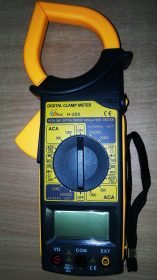
Clamp-on ammeter or simply ‘clamp meter’ is an instrument that is used to measure the current flowing through a conductor. An AC Clamp meter basically consists of a current transformer in its jaws, bar CT usually. Utilizing the principle of current transformer, the reading will be displayed.
Whereas a DC clamp meter is quite different. It uses a Hall Effect sensor for measuring the current.
How does an AC clamp meter work?
When the instrument is ‘clamped’ on a conductor, the conductor itself acts as primary and the magnetic flux due to current flowing through the conductor cuts the secondary of CT.
The current in the secondary of the CT is converted to voltage using a current-to-voltage converter. This signal is fed to an analogue to digital converter. A micro controller is usually employed and it will drive the display circuit for the current reading.
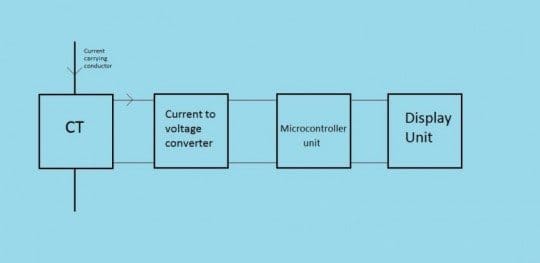
How does a DC clamp meter work?
Unlike AC, current transformers cannot be used for measuring direct current. So Hall Effect sensor is used for this purpose. The Hall element used responds to the magnetic flux due to direct current in the conductor which produces voltage across the element.
The developed voltage is proportional to the current in the conductor. So by measuring voltage, current can be determine.
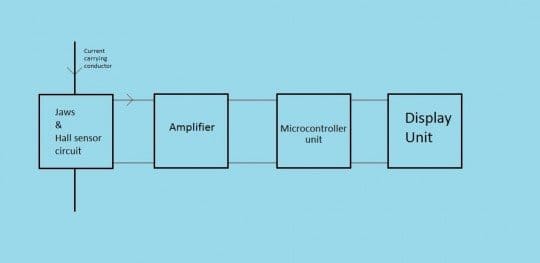
Hall Effect and Hall Effect sensor
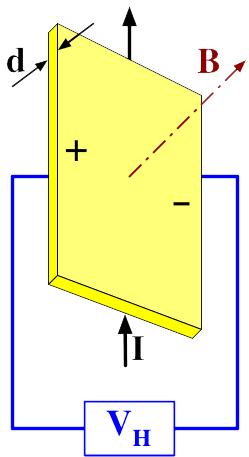
The Hall effect is the production of potential difference across an electrical conductor, transverse to current in conductor and a magnetic field perpendicular to the current. This effect was discovered by Edwin Hall in 1879.
A Hall Effect sensor is a transducer that produces a voltage when kept under the influence of magnetic field. The charge carriers experience a force called Lorentz force. Due to this force the charges gets distributed on the surface of material leaving equal and opposite charges on the opposite surface which constitutes a potential difference that exists as long as magnetic field is steady.
In a DC clamp meter Hall Effect sensor is used as a magnetometer. The voltage so developed is proportional to magnetic field and hence to the current.
Even though a clamp meter is mainly used for measuring current, these instruments are added with feature to measure voltage, resistance, frequency etc.




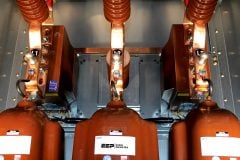






Hi
I am searching about on line tool wear monitoring and I need a clamp ampere meter with these specifications:
maximum current AC and DC 20A
resolution 0.01
analogue output (4-20 mA) to connect to a data acquisition card
I hope some one help…..
Tankss
Great work Brother. It is very helpful paper…..
how do you do a balanced elctrical in low voltage?
Very good and usefull paper
Nice and concise explained. Nicely written Ram!
Thanks
good paper buddy :)